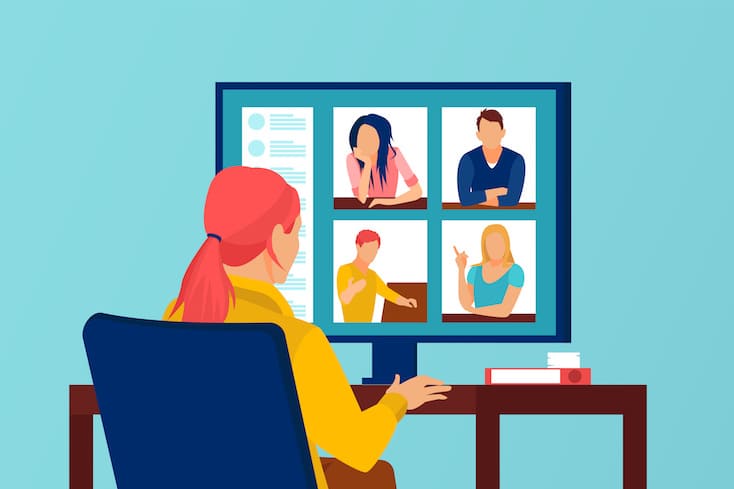
For 10 years, I have led a NAMI Connection support group. In July 2020, I was asked to facilitate a NAMI meeting online and faced a big adjustment converting a typically in-person support group into a virtual one.
I asked our local New Orleans team group coordinator for some advice. She said it would be the same as facilitating an in-person meeting, except it would be on the Internet. Simple enough, I thought. So, I went to work.
Through that process, I learned a lot about how to make the switch to a virtual environment and offer a few tips based on my experience.
Preparing for the Group
- Ask Participants What They Want
- Before scheduling the meeting, I sent out a survey to attendees to ask when would be a convenient time for our local group to meet online. I also asked if support members had any input about what would help them adjust to a virtual format. It’s good to hear feedback from participants on what they want before making any final decisions.
- Offer Assistance to Participants
- Many peers may not know how to use a computer to access an online support meeting. So, prior to a meeting, it can be helpful to send a “how to” list for navigating in the virtual platform (such as Zoom), how to download the app or how to use their device — whether it’s a smartphone, laptop, tablet — to access the meeting. You can also check in with them beforehand to see if they need any assistance. That way, when it’s time for the meeting to start, all participants know how to log in and no valuable time is lost trying to figure out the technology.
- Communicate Details
- Make sure everyone knows the meeting time and date as well as who will be facilitating. Limit the meeting time to no more than one to two hours. It’s good to have two group leaders and limit the number to between 9–12 participants. If there are more than 15 people, you may need to schedule an additional group. It’s also helpful to have an extra or alternate leader to ensure there are always two present during every meeting.
During the Meeting
- Be Professional
- This may seem simple, but make sure you and other group leaders are well groomed and dressed appropriately. Even though you are at home, people can still see you on video, and you want your group to be as professional as possible. It’s also helpful to ask if participants have any feedback for you at the end of every meeting so you can improve the experience over time.
- Explain the Rules of the Group
- Make sure everyone knows the rules of the group. Some basic rules include the importance of timing and politeness, that peers are in a safe environment, and there should be no judgment during the meeting. You can also add in any rules your participants identify through their feedback.
- Make People Feel Comfortable
- I always encourage members to participate and share. Now that meetings are online, part of my role is making sure people feel at ease with being on the Internet. So, following the advice my coordinator gave me, I run every meeting as if it’s in person, and I use the same format each week so everyone knows what to expect.
- Use the “Time Out” Box
- It’s important to let everyone know that there is a “time out” box on Zoom available if someone wants to discuss a private issue with one of the leaders. I have had people become emotional and cry during the middle of the meeting, so letting participants know in advance they can use this feature has been really helpful.
Even though the transition from in person was a big adjustment in the beginning, I began feeling more comfortable as I got used to the virtual meetings and once they were running smoothly. After two months, more people joined online with the group and it made me feel like I was contributing more to the mental health movement during this pandemic. Hopefully, these tips can help other people do the same for their communities.
Jessie Smith III is a Certified Peer Support Specialist for NAMI New Orleans. He also serves on the board of NAMI Louisiana. Jessie attended Tulane School of Medicine and LSU School of Public Health.
